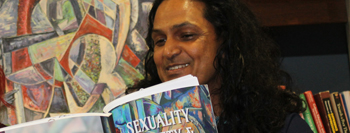
Prof Dennis Francis
Photo: René-Jean van der Berg
Violence in schools, especially gender violence, has been a much explored and debated topic. But researchers at the University of the Free State (UFS) are now also exploring the link between gender, diversity and violence in schools in Southern Africa.
This study – a first of its kind – received funding from the United Nations Educational, Scientific and Cultural Organisation (UNESCO) and will investigate how the perception of ‘different’ is a contributing factor to violence in schools.
This UNESCO-funded study, in collaboration with Hivos, GALA and the Government of the Netherlands, will involve schools in Botswana, Lesotho, Namibia and Swaziland.
Prof Dennis Francis, UFS Dean of Education and principal researcher in this study, says children and youth around the world are exposed to violence in and around educational settings. “This does not only undermine a child’s rights to quality education, but also the capacity of the education sector to train future citizens who will respect each other regardless of differences.”
Prof Francis says although girls are the most vulnerable targets of GBV, boys can also be targets, as evidence reveals that many children and youths who are perceived as different in terms of gender, are often victims of violence in school.
“Education is the most significant means of fostering social inclusion, promoting individual rights and realising the full potential of all young people, including those perceived as different. This project is aimed at assisting government, policy makers and professionals in the education sector, as well as civil society organisations and other key stakeholders in Southern Africa to create educational policies and practices that promote safe schools for all youths.”